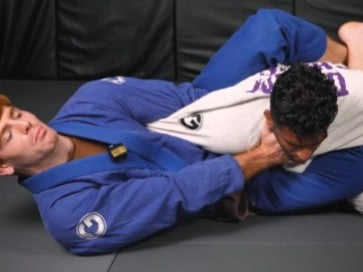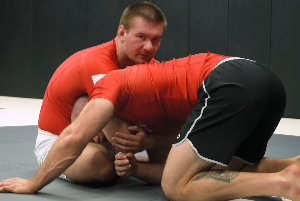Jiu jitsu is a full contact sport, so maintaining good hygiene is important for your own health but also to protect your teammates. Left untreated, certain skin infections can spread rapidly and wreak havoc on a gym. Below, you’ll find a quick overview of the most common skin infections jiu jitsu athletes deal with, how to prevent them, and how to treat them if you do get them.
Ringworm
What is ringworm? Ringworm is a common fungal skin infection. In a consistently warm, moist environment, fungi that are normally found on your skin, hair, and nails sometimes grow out of control and cause a mild, but annoying, rash. Athlete’s foot and jock itch are common forms of ringworm.
What does a ringworm infection look like? Usually, ringworm starts out with a red, scaly, flaky patch of skin or a bump. Eventually, it might start to look more like a ring with a clear center and a red, raised, bumpy, scaly border. Not every ringworm infection develops this ring pattern, but it is common enough that it gave the skin condition its name.
On the fingernails and toenails, ringworm can make nails thicker, white or yellow, and brittle.
How do you get ringworm? Unfortunately, it is very common and easily spread through skin-to-skin contact with an infected person or animal, shared surfaces (like a jiu jitsu mat or bathroom floor), and shared objects (like a towel).
Why is ringworm a problem in jiu jitsu? Certain activities can increase your chances of developing ringworm, including excessive sweating, participating in contact sports, and walking barefoot in public showers, bathrooms, or locker rooms. So….basically jiu jitsu.
How can you prevent ringworm? For the most part, try to keep your skin clean and dry. After a training session, put on some shower shoes and use a good body wash as soon as possible. If you can’t take a shower right away, you might also consider keeping some body wipes in your bag. Use a clean towel to dry off completely, and don’t share your towel. Use a bag that allows you to keep your sweaty uniform separate from your other gear and then wash your gi or nogi gear before wearing again.
How do you treat a ringworm infection? Mild cases of ringworm respond well to over-the-counter (OTC) antifungal creams. However, if the rash gets worse, doesn’t go away after two weeks of treatment, or is on your scalp or nails, you will need to see a doctor for prescription medication.
How long does ringworm last? Two to four weeks of treatment with OTC medication should clear up mild cases of ringworm. More serious infections and infections on the scalp or nails can take anywhere from one to three months to clear up with prescription treatment. Continue treating ringworm for at least a week after the rash is gone.
Although it should go without saying, DO NOT TRAIN with an active case of ringworm! Just covering up affected areas is not enough. Once the rash has cleared up, you can return to training. Check with a doctor for further guidance.
Staph
What is staph? Staph is short for staphylococcus bacteria, which are germs found on many healthy people’s skin and in their noses. This bacteria can cause several types of infections and can lead to serious, sometimes life-threatening, complications if left untreated.
What does a staph infection look like? Different types of staph infections on the skin can take different forms. Boils (red, painful lumps often filled with pus) can appear on the head, neck, and buttocks, or in the armpits or groin area. Abscesses might develop, usually after a small bump ruptures or other wound gets worse. You might also notice itchy, pus-filled lumps around the hair follicles.
No matter where your staph infection shows up, you will likely have tenderness, redness, and swelling around the infected area.
How do you get staph? Open scratches, cuts, or wounds and hair follicles and oil glands that come into contact with the staph bacteria and are not cleaned properly can lead to a staph infection.
Why is staph a problem in jiu jitsu? Because jiu jitsu athletes are constantly using fingers and toes to grip, it’s important to keep your nails trimmed short. However, even well-trimmed nails can sometimes result in scratches or cuts. In addition, constant friction against training partners, gis, and the mat can lead to mat burn. Staph infections can result from these areas of broken skin coming into contact with staph bacteria that is naturally occurring.
How can you prevent staph infections? Good hygiene before and after training will go a long way toward preventing skin infections of all kinds, including staph. Wash your hands, wear a clean gi, shower after training, etc.
If you do happen to get mat burn or a cut, clean it as soon as possible with soap and water, apply OTC antibiotic ointment like Neosporin, and cover it when you train.
How do you treat a staph infection? See a doctor immediately for any of the following:
- A wound that oozes pus or a honey-colored liquid
- You develop a fever, chills, aches, or other flu-like symptoms
- A small bump that becomes a deep abscess
- You notice swelling, redness, pain, or a hot feeling around any wound
- There is an unpleasant smell
- Any wound is taking longer than normal to heal
A staph infection requires prescription antibiotic treatment from a doctor. They will also clean the wound properly.
How long does a staph infection last? Recovery times will vary, depending on how soon you caught the infection, how quickly treatment started, and how well your body responds to the antibiotics.
Again, it’s important to stay off the mats until you are certain your staph infection is cleared up. Your doctor will be able to provide further advice.
Impetigo
What is impetigo? Impetigo is a bacterial infection caused by the same bacteria that cause strep or staph, which then enter your body through a cut or open wound.
What does impetigo look like? At the beginning, a case of impetigo will give you small clusters of red bumps, usually around the nose and mouth or hands and feet. Eventually, these bumps rupture, ooze for a few days, and then leave a yellowish crust or scab.
How do you get impetigo? Unfortunately, impetigo is highly contagious and spreads through skin-to-skin contact as well as contact with infected surfaces like clothing, towels, etc.
Why is impetigo a problem in jiu jitsu? Because the impetigo rash is often found on the face, hands, and feet, it’s very easily spread in jiu jitsu, especially if you train nogi, where you grip on the body instead of using the gi. The bacteria thrive in warm, humid environments, like the ones commonly found in jiu jitsu gyms.
How can you prevent impetigo? As with other skin infections discussed earlier, good hygiene is essential to preventing impetigo. If you notice a teammate with a rash of small blisters on their face, hands, or feet, you can decline to train with them and alert them to a potential problem.
How do you treat impetigo? Seek help from a medical professional. They can prescribe an antibiotic cream. If the impetigo is widespread, they might also prescribe oral antibiotics. Don’t scratch open sores, since this can spread the infection to other parts of your body.
How long does impetigo last? With treatment, impetigo usually clears up in 7-10 days. You are contagious while you have lesions or sores. Check with your doctor for clearance to begin training again.
Herpes gladiatorum
What is herpes gladiatorum? Sometimes known as “mat herpes” or “wrestler’s herpes,” this viral skin infection falls into the same category as cold sores.
What does mat herpes look like? The rash begins as small clusters of red bumps or irritated skin that eventually become fluid-filled blisters. A few days later, the blisters flatten and develop yellowish-brown scabs. Athletes can develop a rash on any part of their body.
You may also have a fever, notice tingling in the affected area, and have swollen glands, along with the rash.
How do you get mat herpes? Most people have already been exposed to the virus that causes mat herpes. It spreads through direct contact with the lesions on an actively infected person.
Why is mat herpes a problem in jiu jitsu? Because it is a very common virus that spreads through direct contact with the skin, mat herpes can be a problem for athletes engaged in full-contact sports like wrestling and jiu jitsu. Because it is viral, antifungal creams and antibiotics are ineffective.
How can you prevent mat herpes? At this point, you probably already know the short answer: good hygiene practices. Wash your hands before and after training. Clean your uniform. Don’t share personal items, including lip balm or water bottles. Shower immediately after training. Avoid skin-to-skin contact with teammates who have a rash. Don’t pick at or pop blisters.
How do you treat mat herpes? Time. Most cases are mild, and the lesions go away on their own. However, if your rash is near your eyes, see a doctor immediately for treatment. In some cases, a doctor may prescribe an antiviral medication.
How long does mat herpes last? Active lesions usually go away after 7-10 days. Do not train while you have a rash.
Keep it Clean

Remember, an ounce of prevention is worth a pound of cure. Take care of yourself and your teammates by washing your hands often, keeping your nails trimmed and clean, showering as soon as possible after training, wearing shoes in the bathroom/locker room/showers, cleaning your gi and nogi gear, treating skin infections quickly, and staying off the mats until your infection clears up.
This article is meant for informational purposes only and should not be taken as medical advice. Please see an actual medical health professional for diagnosis and treatment of skin infections.



